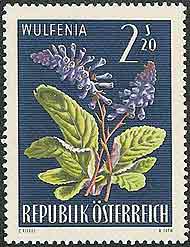
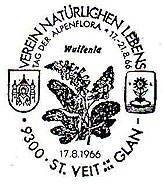
AUSTRIA, 1966, Scott 766 and its special cancel
Father
Franz Xaver Freiherr von Wulfen, SJ |


AUSTRIA, 1966, Scott 766 and its special cancel
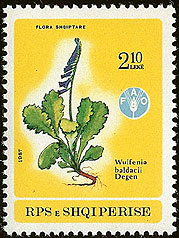
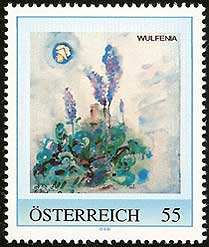
ALBANIA, 1987, Wulfenia baldaci Dege, Scott 2248
AUSTRIA, 2007, stamp personalized by the Wulfenia Stamp
Club from Hermagor, Austria.
Wulfen discovered wulfenia on Gartnerkogel, a mountain southwest of Hermagor.
The painting is by Max Gangl, a native of that village.
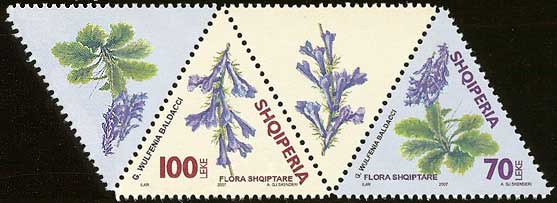
ALBANIA, 2007, two images of Wulfenia baldaccii from Albania with labels, Scott 2844
Father Franz Xaver Freiherr von Wulfen was born in Belgrade, son of the Austrian lieutenant field-marshal, Christian Friedrich von Wulfen. After studies at Kaschau, Hungary, he joined Jesuits in 1745, studied and taught at the Theresianum in Vienna, at Graz, Neusohl, Gorz, Lailbach, and from 1764, when the Jesuits were suppressed, until his death in 1805, at Klagenfurt. He was a distinguished scholar and botanist especially of the Eastern Alps. Many plants bear the species or subspecies name "wulfenii" in his honor. Two species of the genus Wulfenia are represented philatelically: Wulfenia carinthiaca from Austria, and Wulfenia baldaccii from Albania.
In addition to wulfenia, other botanical items are named for him, among them yellow houseleek (Sempervivum wulfenii) and mediterranean spurge, a spectacular winter flowering garden plant, the largest variety of the Euphorbia family, very popular with landscapers (Euphorbia wulfenii).
AUSTRIA, 2013, a personalized stamp commissioned by Rudolf Gallers, a member of the St. Gabriel Society, a renown Christian philatelic association.
who also raises wulfenia in his herbarium. The angel in the upper right is the logo of the St. Gabriel Society.
AUSTRIA, 1979, special cancel, 200th anniversary of discovery of wulfenia
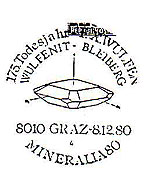
AUSTRIA, 1980, special cancel, the 175th anniversary of the death of Fr. Franz Wulfen, SJ
showing a mineral named for him, wulfenite
THE UNITED STATES, 1995, special show cancel also showing the mineralIn 1775, Fr. Wulfen had supplied the first detailed description of the mineral lead molybdenum complete with colored illustrations showing crystals. He had discovered it in Austrian mines near Bleiberg and Carinthia. The mineralogist Heidinger named the ore wulfenite in 1845 to honor Fr. Wulfen's mineralogical research. Other stamps and souvenir sheets below illustrate the mineral wulfenite.
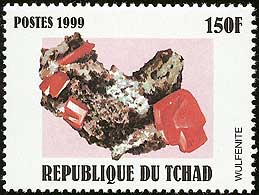
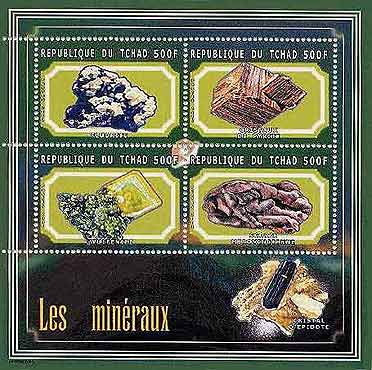
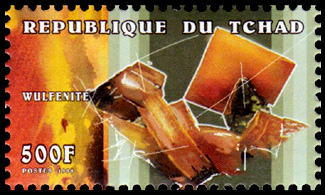
CHAD, 2000 dated 1999, Scott 839
CHAD, 1998, from a souvenir sheet of six stamps, Scott 788B
CHAD, 2001, lower left, Scott 934c
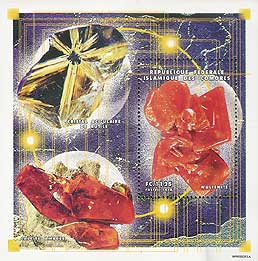
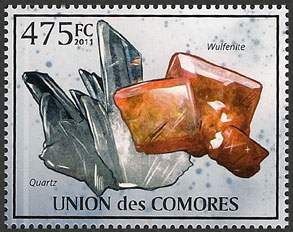
COMOROS, 1998, on the right, Scott 933
COMOROS, 2011, quartz and wulfenite from a mini-sheet of 5 mineral stamps
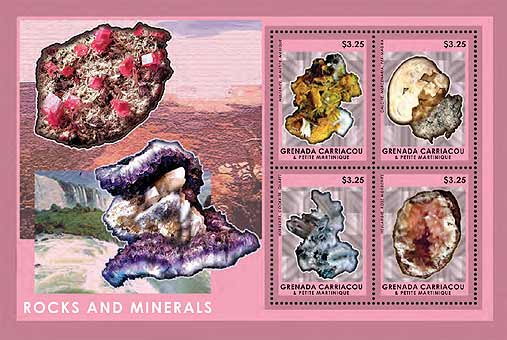
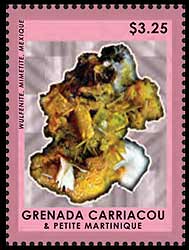
GRENADA GRENADINES, 2014 stamp 2884a (upper left) is example of wulfenite,
Scott 2884
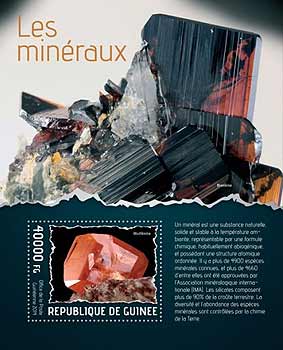
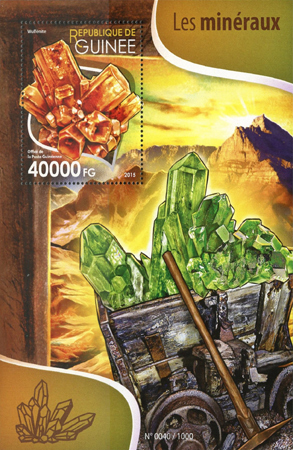
GUINEA, 2014 and 2015
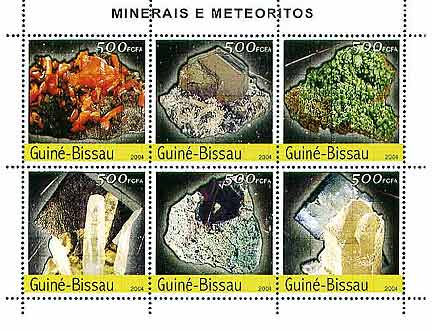
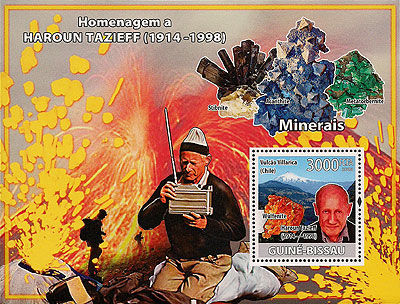
GUINEA-BISSAU, 2004, upper left
GUINEA-BISSAU, 2008
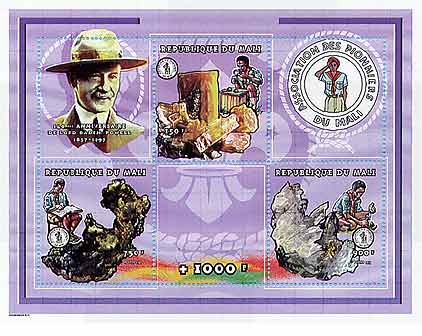
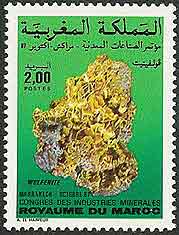
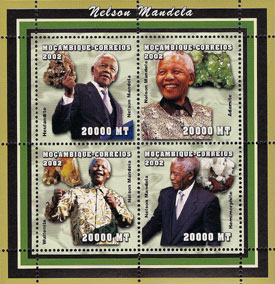
MALI, 1997, the top center has been identified as barite or wulfenite, Scott
949, 952
MOROCCO, 1987, Scott 649
MOZAMBIQUE, 2002, showing Nelson Mandela with wulfenite on lower left,
Scott 1605
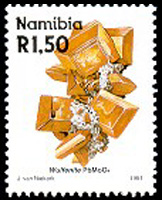
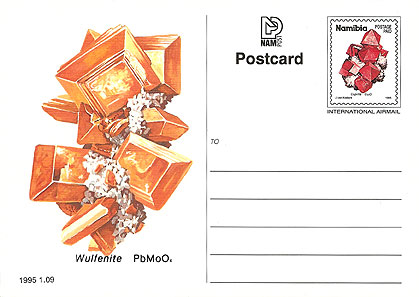
NAMIBIA, 1991, Scott 687
NAMIBIA, 1995 postal card, both stamp and vignette are wulfenite.
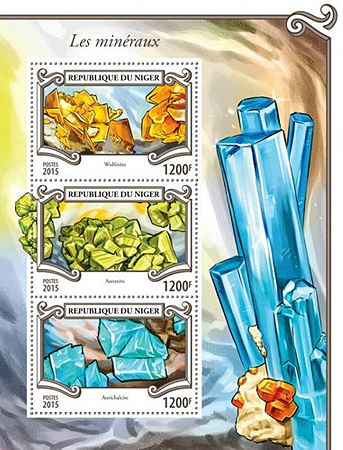
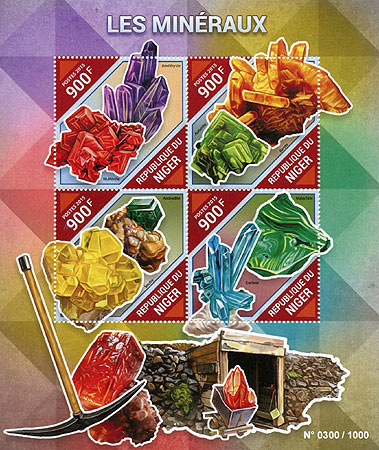
NIGER, 2015 wulfenite appears on the top stamp and on the selvage. Also available imperf.
NIGER, 2015 wulfenite appears on the top left stamp as a reddish mineral.
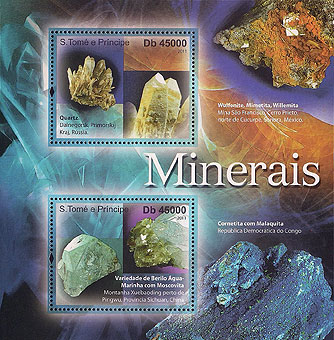
ST. THOMAS AND PRINCE, 2011, in the upper right of the souvenir sheet selvage is a
mix of wulfenite, mimetite, and willemite, Scott 2406
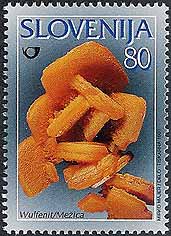
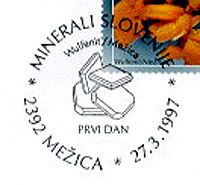
SLOVENIA, 1997, Scott 286 & its FDI cancel
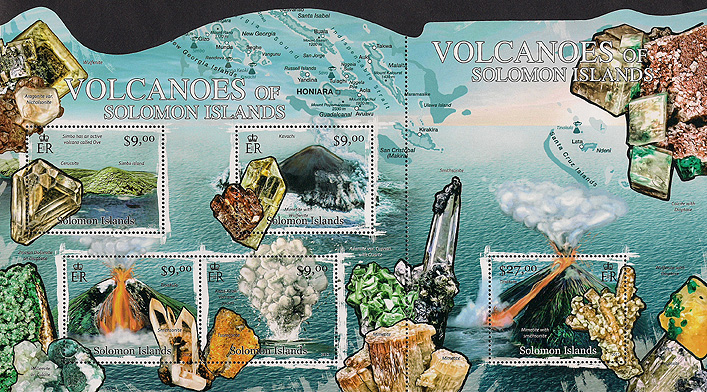
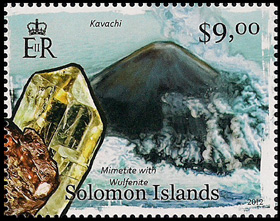
SOLOMON ISLANDS, 2012, at the top center of this volcanoes and minerals
issue
The black at the top of the souvenir sheet is background, not part of the sheet.
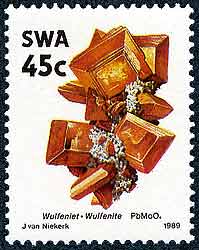
SOUTH WEST AFRICA,1989, Scott 637
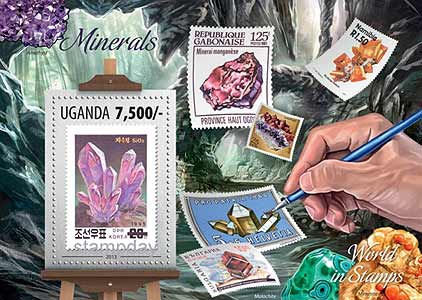
UGANDA, 2013, a stamp on stamp souvenir sheet including the Namibia issue.
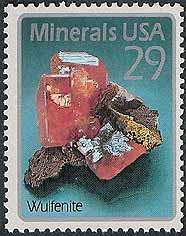
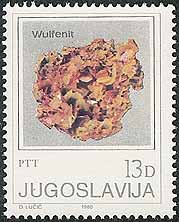
THE UNITED STATES, 1992, Scott 2703
YUGOSLAVIA, 1980, Scott 1501